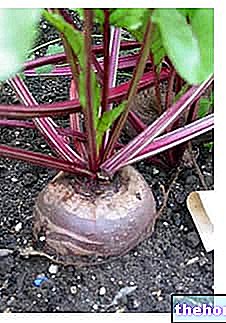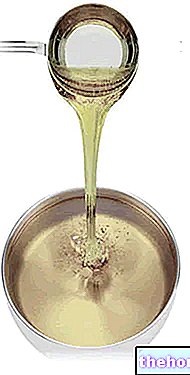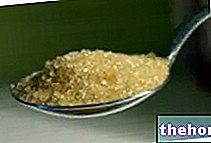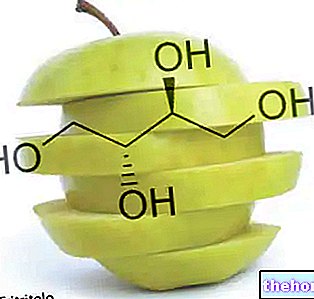Generalities and characteristics of the various fructose syrups
According to the current legislature, "fructose - glucose syrup" is a purified and concentrated aqueous solution of dietary carbohydrates, obtained from starch and / or inulin, which must meet the following characteristics:
a) dry matter not less than 70% by weight
b) dextrose equivalent not less than 20% by weight on dry matter, expressed as D-glucose
c) sulphated ash not exceeding 1% by weight on the dry matter.d) fructose content higher than 5% and higher than glucose content; otherwise, subject to the 5% constraint, we speak of glucose-fructose syrup.
The dextrose equivalent is an estimate of the percentage of reducing sugars present in the fructose syrup.

The definition of fructose syrup given by the legislator is quite broad, which is why this denomination is attributable to products with slightly different characteristics. Much used, especially in soft drinks, are for example fructose - glucose syrups which contain the two sugars in percentages of 55 and 45% respectively (HFCS 55); However, other types of syrup more or less rich in fructose are available on the market (HFCS 90, HFCS 42 etc.). It is therefore wrong to believe that fructose syrup is composed entirely of fructose; in reality we are talking about a mix of glucose and fructose in variable proportions. The higher the percentage of fructose, the greater the solubility in water and the sweetening power. Furthermore, fructose develops its maximum sweetening potential in conditions of acidity and low temperature, consequently, fructose syrup is widely used in soft drinks, the same ones that the English call "soft drinks".
HFCS is the achronic of High-Fructose Corn Syrup, Italianized in corn syrup with a high fructose content; this product, in fact, is mainly obtained starting from "corn starch." Starch, in fact, is a polysaccharide made up of many glucose units linked together in a linear and branched way. Enzymes capable of dissolving these bonds are then added industrially, giving rise to much shorter glucose chains (maltose, dextrins) and single sugar units. Among these enzymes we remember the alpha amylase, which makes it possible to obtain syrups with a content of about 10-20% of free glucose, and the gluco-amylase, which increases this percentage to over 90%. The alpha-amylase is produced industrially using a bacterial species (Bacillus sp.), while a fungal species is used for gluco-amylase: l "Aspergillus.
To obtain the product object of this article, the glucose syrup is subjected to the action of the glucose-isomerase enzyme, which allows the commercialization of corn syrups with a high fructose content (HFCS). In fact, since the mid-1970s, this enzyme (more properly known as xylose isomerase), which transforms glucose into its sweet isomer, fructose, is industrially obtained from the microorganism Streptomyces murinus.
Fructose syrup in food
We find glucose-fructose syrup in many food products (sweets, cereals, biscuits, snacks and yogurths, sport drinks, ketchup etc.); it is also used in ice cream as a controller of the degree of sweetness and to lower the freezing point; thanks to its characteristics, it also increases the creaminess and softness of the ice cream.
Fructose syrup, diabetes and body weight
From the metabolic point of view, fructose has some peculiarities that for a long time have made it considered a valid ally for athletes and diabetics. After ingestion, in fact, fructose is absorbed by the digestive tract at a lower rate than glucose and to sucrose, hence the low glycemic index. Once absorbed from the "small intestine, fructose is transported to the liver, where" it is used to synthesize hepatic glucose without the need for insulin. Precisely because of its low glycemic and insulin index, for a long time fructose was considered an ideal substitute for sugar. Today, however, we know that excessive amounts of fructose (> 40-50 g / day) favor the synthesis of fat in the liver and stimulate the secretion of insulin, leading to states of insulin resistance. For this reason, according to several studies, the intensive use of fructose syrup as a sweetener would be somehow involved in the spread of obesity and metabolic diseases such as diabetes.
Other Foods - Sweeteners Acesulfame K Aspartame Sugar beet Sugar cane Sodium cyclamate Dextrose Sweeteners Erythritol Fructose Maltose Mannitol Molasses Saccharin Saccharose Maple syrup Agave syrup Fructose syrup Glucose syrup Sugar sorbitol Articles Stevia Sucralitol sugar SWEETENERS Categories Alcoholic Foods Meat Cereals and derivatives Sweeteners Sweets Offal Fruit Dried fruit Milk and Legumes Oils and Fats Fish and fishery products Salami Spices Vegetables Health recipes Appetizers Bread, Pizza and Brioche First courses Second courses Vegetables and Salads Sweets and Desserts Ice cream and sorbets Syrups, liqueurs and grappas Basic Preparations ---- In the Kitchen with leftovers Carnival recipes Christmas recipes Light diet recipes tici Recipes for the Holidays Recipes for Valentine's Day Vegetarian Recipes Protein Recipes Regional Recipes Vegan Recipes



.jpg)























